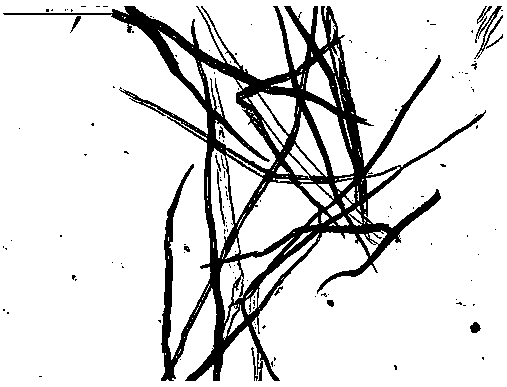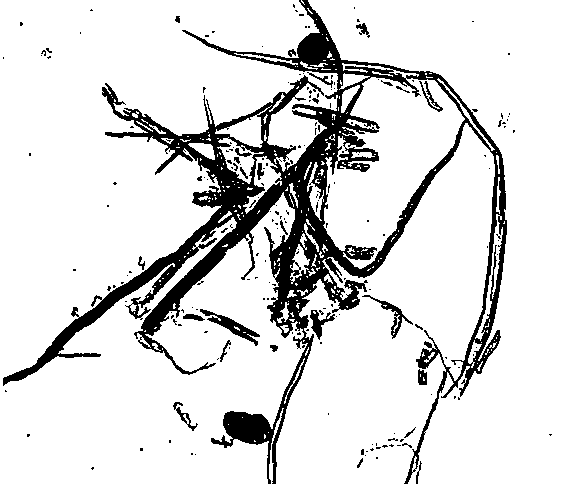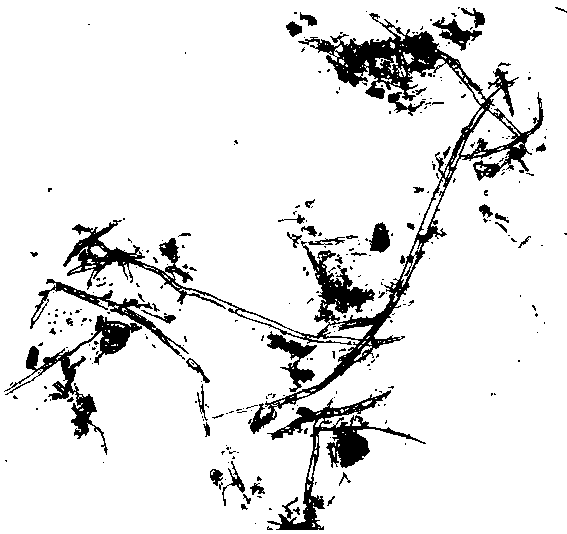Pulping method of edible fungus residue
A technology of edible fungi and fungus residue, applied in the field of utilization of edible fungus cultivation waste, to achieve the effect of increasing economic value, excellent quality and reducing environmental pollution
- Summary
- Abstract
- Description
- Claims
- Application Information
AI Technical Summary
Problems solved by technology
Method used
Image
Examples
Embodiment 1
[0038] 1 Mushroom residue raw material
[0039] There are many raw materials for shiitake mushroom cultivation, mainly fruit trees such as peach wood, plum wood, apple wood, hard miscellaneous wood such as elm, and wheat bran and other mixed materials. In addition to cellulose, hemicellulose, polysaccharides and other substances, these raw materials also contain organic matter such as protein and amino acids necessary for edible fungi. They are rich in nutrients and meet the needs of the growth of shiitake mushrooms. Unlike the raw materials commonly used in pulp and papermaking (such as poplar, eucalyptus, pine, etc.), these woods are hard, have short fibers and relatively low cellulose content.
[0040]Edible fungus cultivation generally goes through the following processes: raw material mixing, bagging of mushroom sticks, high-temperature sterilization, strain inoculation, management of mushroom production, harvesting, culture of bacteria, and secondary fruiting. In the pr...
Embodiment 2
[0096] The prepared slag mechanical pulp was used to produce degradable nursery cups.
[0097] Edible fungus slag mechanical pulp is used to produce pulp molding products such as vegetables, seedling cups, seedling trays, etc. Seedling cups (trays) are 1-2mm thick, with water retention, heat preservation and water resistance properties. When transplanting, the seedlings are transplanted together with the pot, which saves the process of removing the pot, saves labor and time, does not hurt the seedlings, and is beneficial to the survival of the seedlings , Pulp degradable seedling cups can completely replace plastic seedling cups. Edible mushroom residues are rich in nutrients, which are retained during the pulping process. Pulp seedling cups are easy to biodegrade, and the nutrients in the mushroom residues become a source of nutrition for crops without causing environmental pollution. The seedling cup itself has good dry and wet strength.
[0098] Specific steps:
[0099] 2....
PUM
| Property | Measurement | Unit |
|---|---|---|
| width | aaaaa | aaaaa |
| aspect ratio | aaaaa | aaaaa |
Abstract
Description
Claims
Application Information
 Login to View More
Login to View More - R&D
- Intellectual Property
- Life Sciences
- Materials
- Tech Scout
- Unparalleled Data Quality
- Higher Quality Content
- 60% Fewer Hallucinations
Browse by: Latest US Patents, China's latest patents, Technical Efficacy Thesaurus, Application Domain, Technology Topic, Popular Technical Reports.
© 2025 PatSnap. All rights reserved.Legal|Privacy policy|Modern Slavery Act Transparency Statement|Sitemap|About US| Contact US: help@patsnap.com



